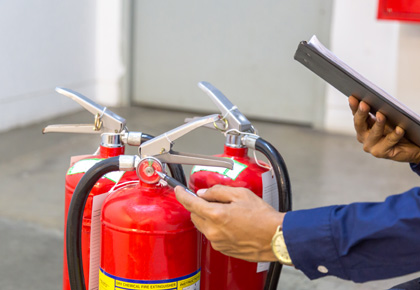 With the stunning views and array of amenities, living in a high-rise can be an exciting experience, but it's also vital to keep high-rise fire safety in mind. Fortunately, there are steps your association board can take and things you can do yourself to help ensure everyone is protected from potential danger.
With the stunning views and array of amenities, living in a high-rise can be an exciting experience, but it's also vital to keep high-rise fire safety in mind. Fortunately, there are steps your association board can take and things you can do yourself to help ensure everyone is protected from potential danger.
What are the five rules of fire safety in a buildings or high rises?
As a board member of your high-rise association, you have the responsibility to make sure all members are safe and secure. Here are some important steps you can take to help protect everyone from potential fire hazards in your community.
-
Create a fire emergency plan
Help ensure the safety and security of your community by creating a comprehensive fire preparedness plan. Work with your management company to develop strategies for effective communication channels, such as newsletters, a website, or emails. Additionally, regularly incorporate this topic into board meetings to emphasize preventive measures that residents can take. Finally, verify whether there is a reliable alert system set up that could notify everyone immediately of any potential danger.
-
Maintain and test your fire safety equipment
Don’t wait for your mandatory fire inspection to see if your equipment is functioning properly. Ensure your community is always prepared for a fire emergency by regularly inspecting and testing critical safety equipment, such as sprinklers, communication systems and backup lighting.
-
Conduct training for staff and residents
Arrange to have your property management company or local fire department provide fire safety and prevention training to your onsite staff and residents. Fire drills help keep evacuation procedures top-of-mind. Instruct residents and staff not to ignore alarms and to follow evacuation protocols and other directives.
-
Keep public areas clear
Time is of the essence in a fire emergency, so it's critical to keep pathways clear. Residents' safety during a fire emergency depends on firefighters having clear access and quick escape routes. Ensure you do your part by ensuring the hallways, stairwells, walkways, and driveways are obstacle-free. Additionally, ensure rules prohibiting items in public areas or parking vehicles in fire lanes are rigorously followed.
-
Consider installing a sprinkler system if your building doesn’t have one
Protect your property and pocketbook with a sprinkler system. According to the National Fire Protection Association, installing a sprinkler system is an invaluable means of reducing damage caused by house fires - but it can also bring its own financial rewards in terms of insurance credits and tax deductions!
Jamie George from FirstService Financial explains that “many buildings receive around 20% off their premiums for having these systems installed, while other associated costs may be eligible for certain tax reductions too”.
What residents can do
Marc Glassman, director of facilities and maintenance at FirstService Residential, says that residents play a big part in fire prevention and safety. “If you’re a high-rise or condo building resident, you need to be knowledgeable and proactive about fire safety – that means following your association’s rules and emergency preparedness plan, as well as doing your part to keep your unit and building fire safe,” he says. “It’s also critical that you and your family are well prepared to ensure everyone’s safety before, during, and after a fire.”You can protect yourself and your family by following these high-rise fire safety tips from the NFPA and FirstService Residential:
-
Take precautions at home
Kitchen fires are one of the leading causes of residential blazes, so take extra precautions by not leaving food unattended on your stove and unplugging any nearby appliances. Remember to blow out candles when you leave a room or before bedtime, as well as monitor children's activities around open flames and electronics. If smoking is permitted in your building’s vicinity, be sure all materials have been extinguished entirely prior to discarding them.
According to the NFPA, you should have smoke detectors inside each bedroom, outside every sleeping area, and on every level of the home, including the basement. Also, be sure to change the batteries in your smoke detectors twice a year.Keep the area around your exits accessible by not leaving large items like strollers or bikes in the way. If you have pets, keep leashes or crates near the doorway for easier evacuation, and be sure your pets have tags or are microchipped.
-
Familiarize yourself with your building
Get to know the building’s layout, as well as the location of fire alarms, stairwells, and exits. You’ll need to know where all the stairwells on your floor are located in case the nearest one is blocked. Select a location away from the building where your entire household can safely meet, and wait for everyone to reunite there.
-
Know your building’s fire safety plan and systems
Participate in fire drills, and get to know your evacuation plan. If there is no plan, ask your board to draw one up or offer to head up a fire prevention committee to spearhead the effort. Also, ask about your building’s fire safety systems, such as fire alarms and sprinklers.
The NFPA or Canadian Fire Safety Association website can also provide additional guidelines.